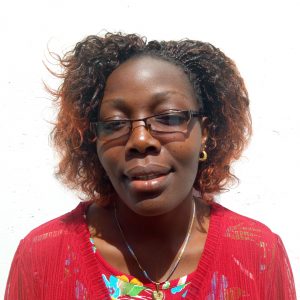Emusoma is in dire need of water for its 280 community members. Currently, people must cross a dangerous and busy tarmac road to get water from another community even though they are afraid because children and adults have both been killed doing so.
"I fear crossing the road since some of my friends were knocked down by a motorbike and died while going for water," said 9-year-old Ryan O., shown below, collecting water from the local spring.

The spring that people rely on is in questionable condition and is far away. Since the spring is also overcrowded once people arrive, they must wait in long lines before collecting water delaying their normal daily activities.
The return trip from the water point carrying heavy, full water containers is not for the weak as it is tiring and physically demanding, causing complaints of chest, neck, and knee pain. And some question if all that work is worth it since consuming the contaminated water often results in cases of typhoid and diarrhea.
“When water comes from improved and more accessible sources, people spend less time and effort in physically collecting it, meaning they can be productive in other ways.” - WHO
During the dry season, the amount of water coming from the spring reduces due to seasonality, causing collection times to increase and conflicts to arise among those waiting for water. But without another option, people become frustrated, so it is understandable when tension spills over.
"[Me] being a livestock keeper and a farmer at the same time, water is very important, but traveling long distances to access it normally inconveniences my daily schedule," said 40-year-old farmer Robai Akhonda, shown below lifting a full jug of water at the spring.

But adults are not the only ones losing opportunities. Students like Ryan find they do not have time for their homework and often arrive late to school because it takes them so long to collect needed water.
"I've been severely punished at school for not completing my assignment and also being late. [When this] happens, [it] affects my mood and my concentration in class as well," said Ryan.
Hopefully, with a well centrally located in their community, children and adults alike will be able to focus on their essential responsibilities and other opportunities currently being neglected.
The Proposed Solution, Determined Together...
At The Water Project, everyone has a part in conversations and solutions. We operate in transparency, believing it benefits everyone. We expect reliability from one another as well as our water solutions. Everyone involved makes this possible through hard work and dedication.
In a joint discovery process, community members determine their most advantageous water solution alongside our technical experts. Read more specifics about this solution on the What We're Building tab of this project page. Then, community members lend their support by collecting needed construction materials (sometimes for months ahead of time!), providing labor alongside our artisans, sheltering and feeding the builders, and supplying additional resources.
Water Access for Everyone
This water project is one piece in a large puzzle. In Kenya, Sierra Leone, and Uganda, we're working toward complete coverage of reliable, maintained water sources that guarantee public access now and in the future within a 30-minute round trip for each community, household, school, and health center. One day, we hope to report that this has been achieved!
Training on Health, Hygiene & More
With the community's input, we've identified topics where training will increase positive health outcomes at personal, household, and community levels. We'll coordinate with them to find the best training date. Some examples of what we train communities on are:
- Improved hygiene, health, and sanitation habits
- Safe water handling, storage & treatment
- Disease prevention and proper handwashing
- Income-generation
- Community leadership, governance, & election of a water committee
- Operation and maintenance of the water point






 Borehole Well and Hand Pump
Borehole Well and Hand Pump
 Rehabilitation Project
Rehabilitation Project


























